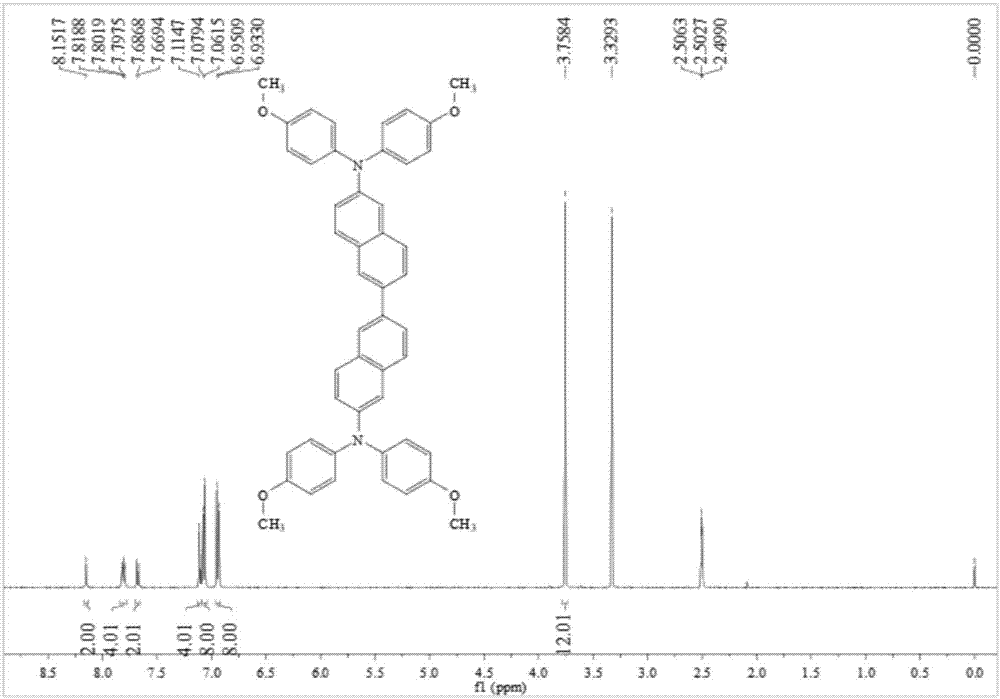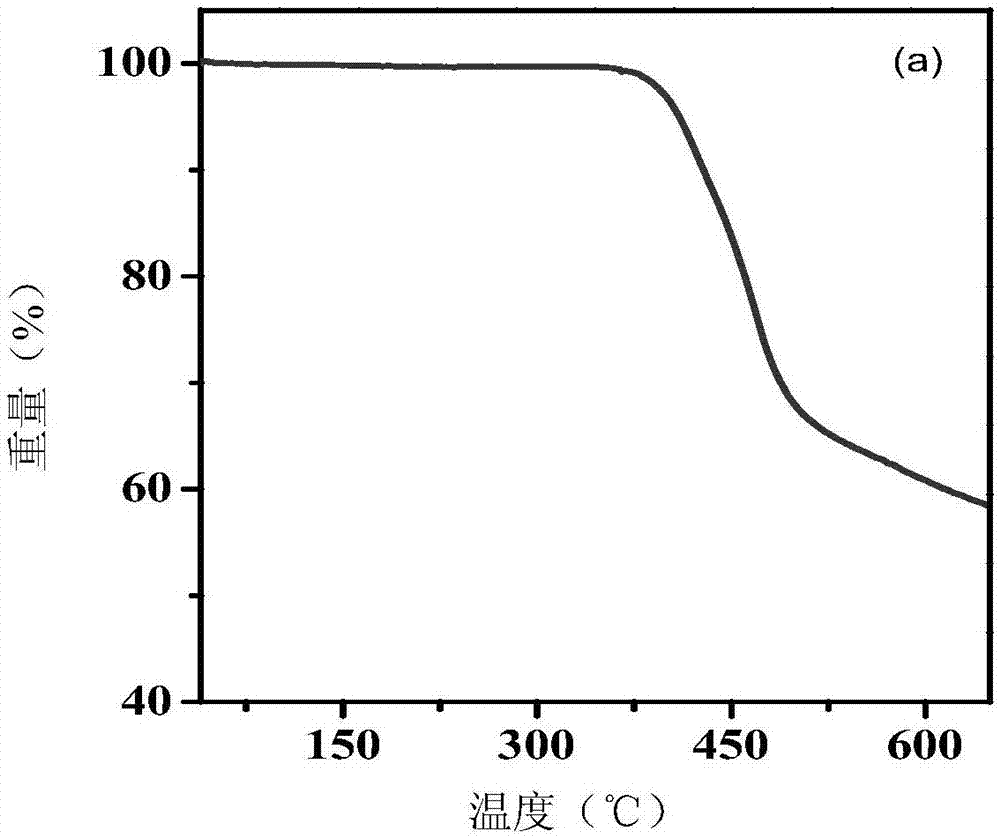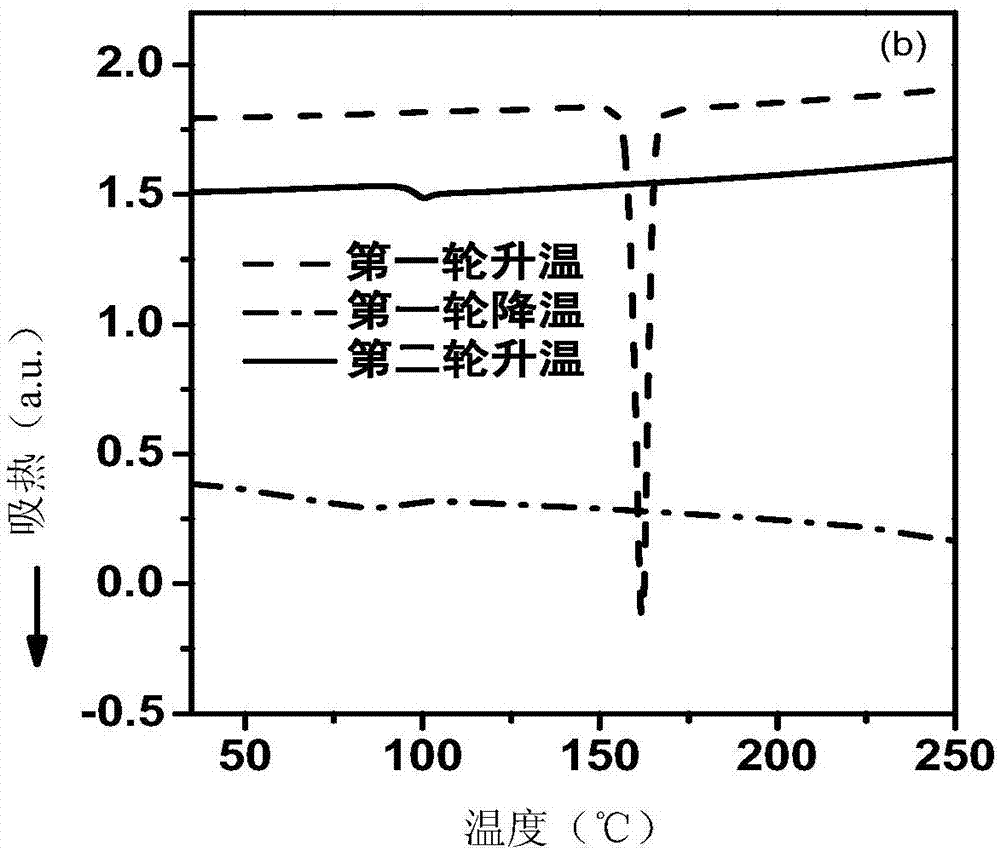High-glass-transition-temperature hole injection material and preparation method and application thereof
A technology of hole injection material and transition temperature, which is applied in the preparation of organic compounds, preparation of amino hydroxyl compounds, organic chemistry, etc., can solve the problem of low glass transition temperature, high material solubility requirements, and insufficient thermal stability. OLED device application requirements and other issues, to achieve the effect of simple method, good solubility, and good hole transport ability
- Summary
- Abstract
- Description
- Claims
- Application Information
AI Technical Summary
Problems solved by technology
Method used
Image
Examples
Embodiment 1
[0054] The structural formula of the hole injection material of this embodiment is specifically as follows:
[0055]
[0056] The preparation method of the hole injection material XL1 with a high glass transition temperature in this embodiment includes the following steps:
[0057] Step 1: Preparation of 6-bromo-N,N-bis(4-methoxyphenyl)-2-naphthylamine (compound 1), the reaction equation is as follows:
[0058]
[0059] Dissolve p-iodoanisole (15g, 0.064mol) and 6-bromo-2-naphthylamine (3.3g, 0.015mol) in 120ml of anhydrous toluene, and quickly add CuI (0.89g, 4.67mmol) under nitrogen atmosphere, 1,10-Phenanthroline (1.232g, 6.83mmol) and sodium tert-butoxide (7g, 75mmol) were heated to 120°C, reacted for about 48h, concentrated to remove toluene, added dichloromethane and distilled water for extraction (dichloromethane and The volume ratio of distilled water is 1:1), the organic layer is dried over anhydrous magnesium sulfate, filtered, concentrated under reduced press...
PUM
| Property | Measurement | Unit |
|---|---|---|
| glass transition temperature | aaaaa | aaaaa |
| wavelength | aaaaa | aaaaa |
Abstract
Description
Claims
Application Information
 Login to View More
Login to View More - R&D
- Intellectual Property
- Life Sciences
- Materials
- Tech Scout
- Unparalleled Data Quality
- Higher Quality Content
- 60% Fewer Hallucinations
Browse by: Latest US Patents, China's latest patents, Technical Efficacy Thesaurus, Application Domain, Technology Topic, Popular Technical Reports.
© 2025 PatSnap. All rights reserved.Legal|Privacy policy|Modern Slavery Act Transparency Statement|Sitemap|About US| Contact US: help@patsnap.com



